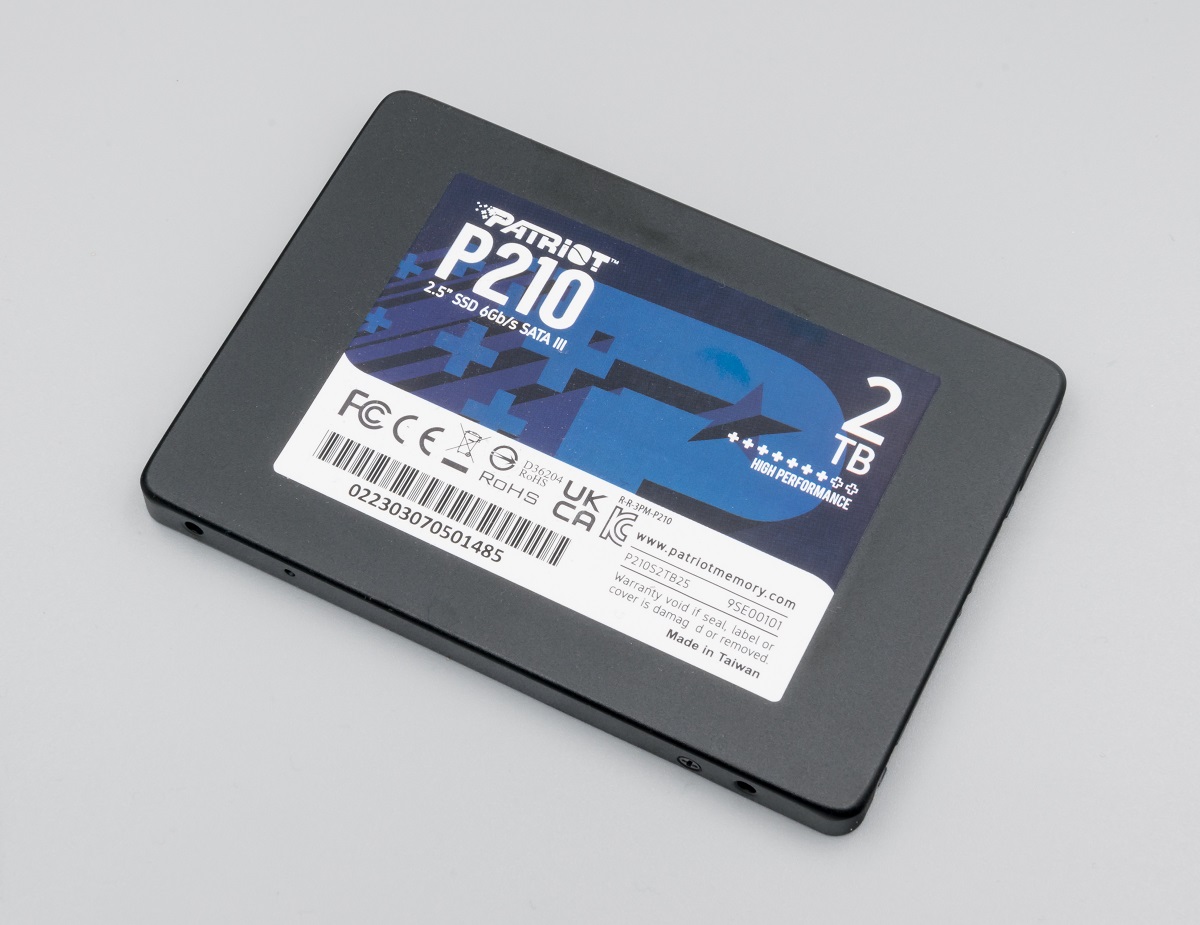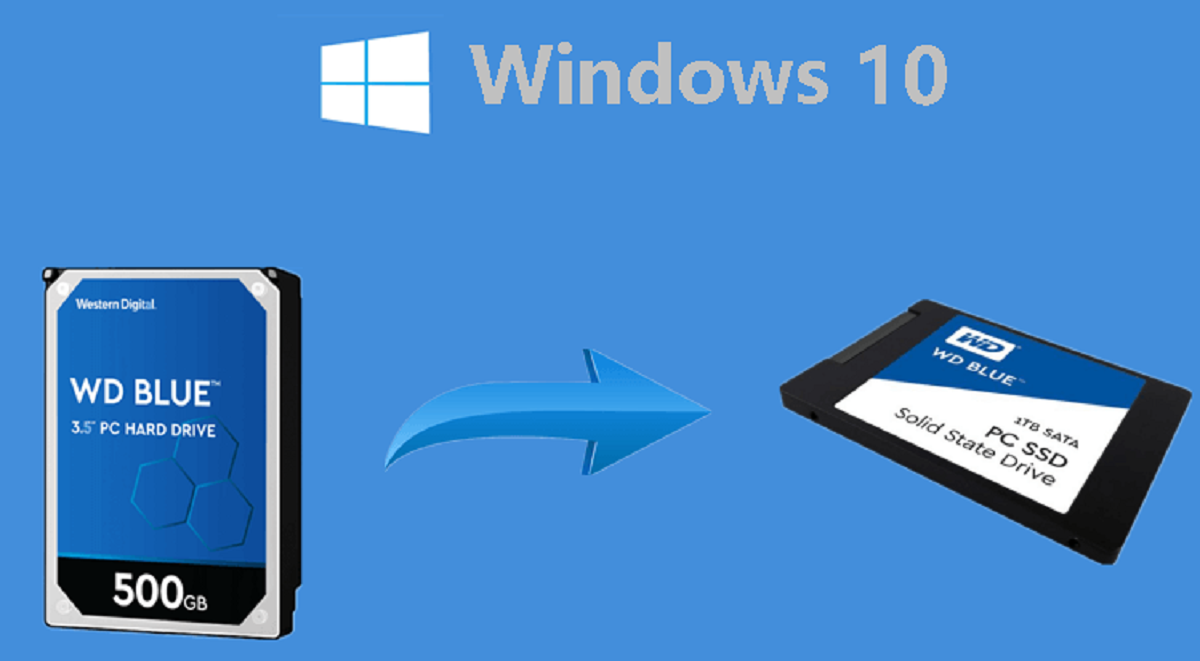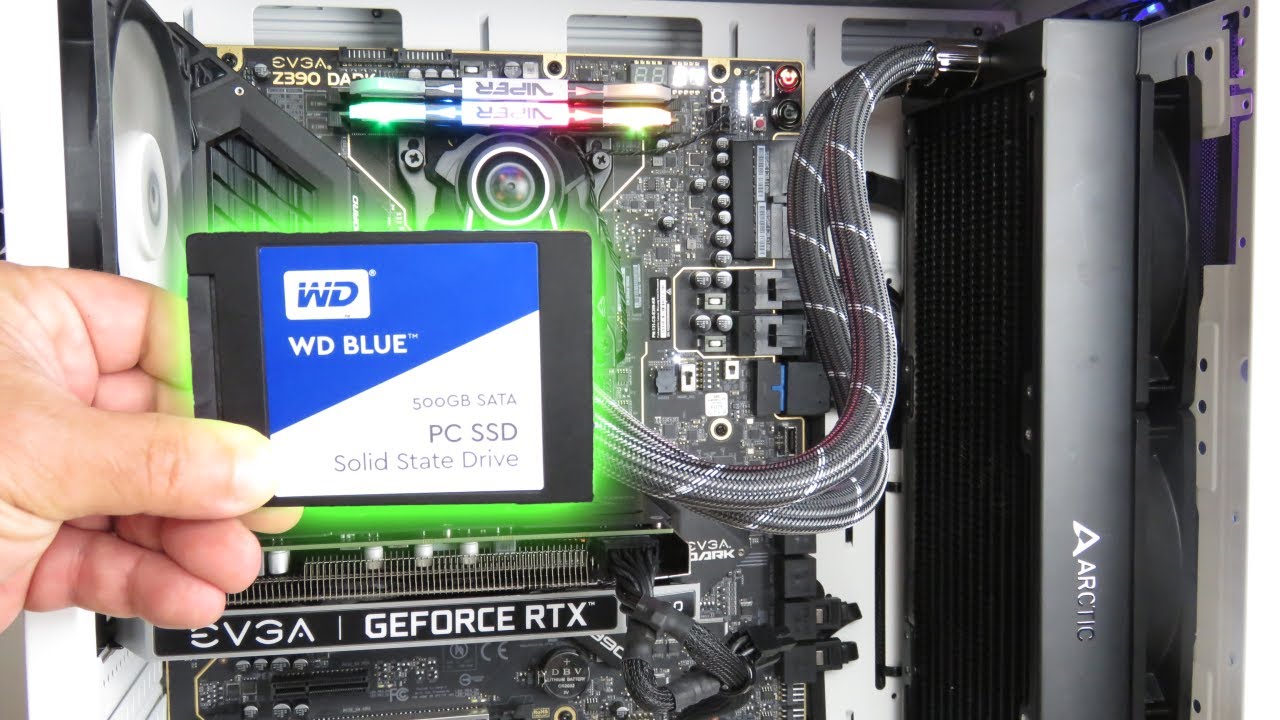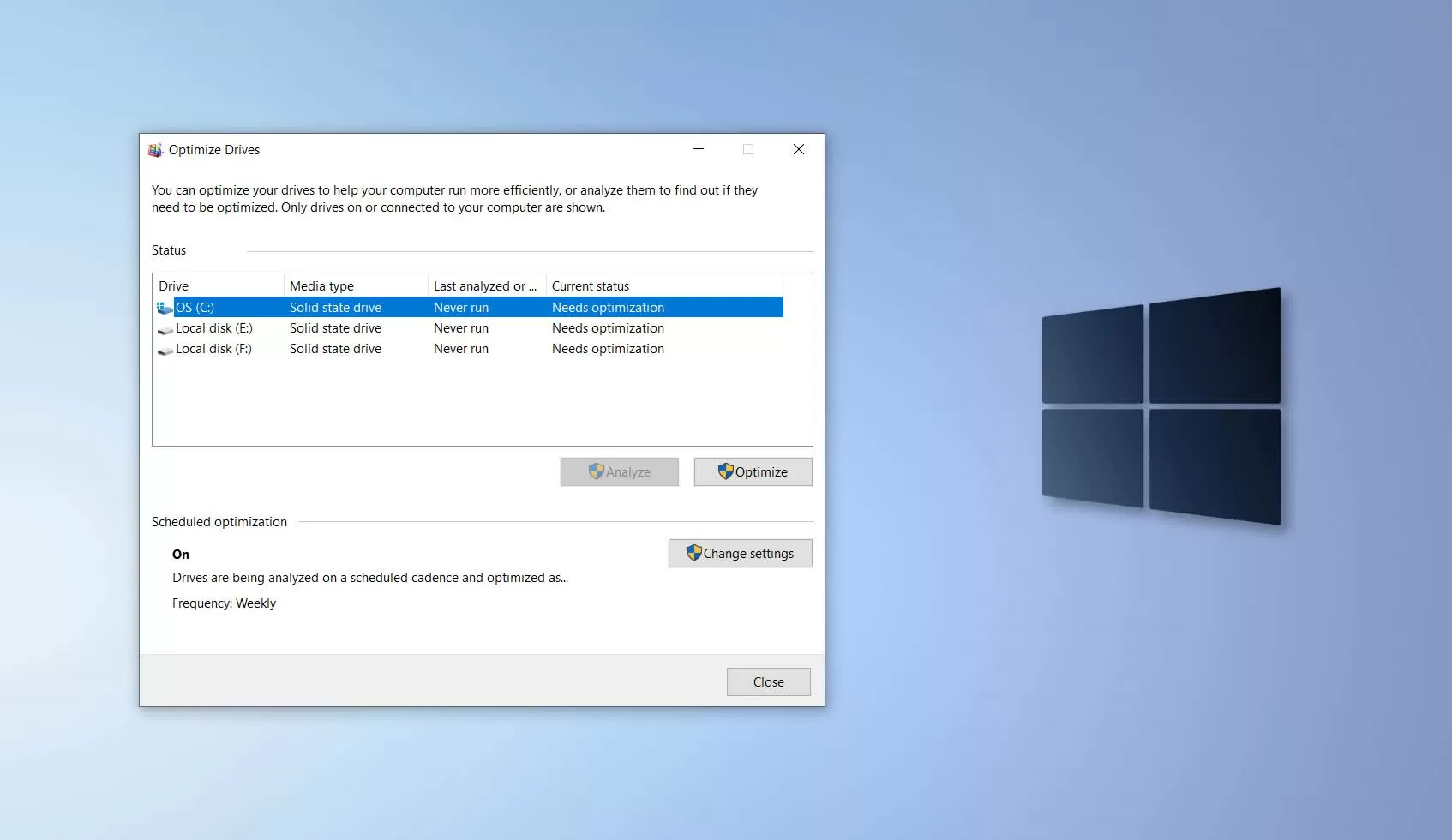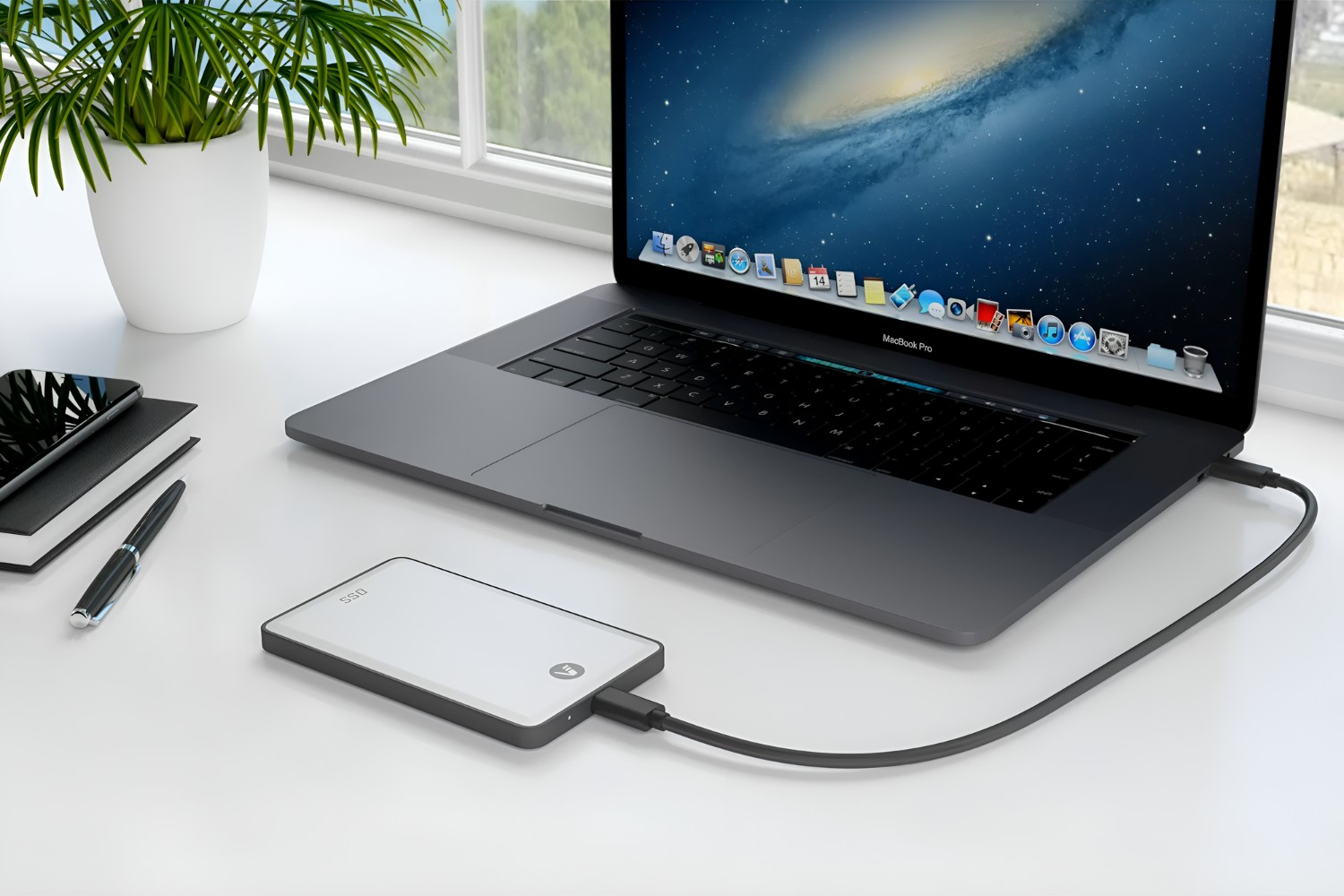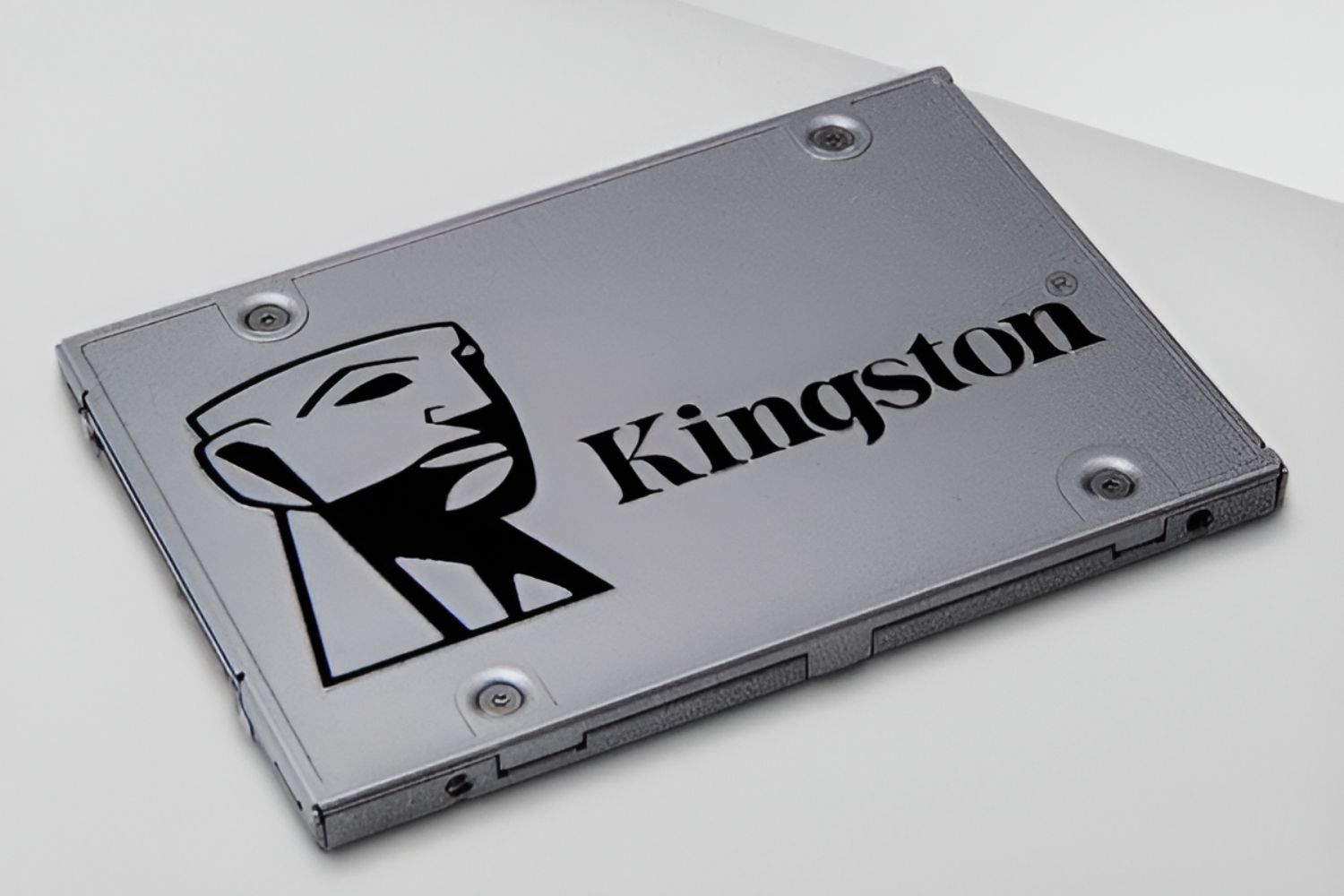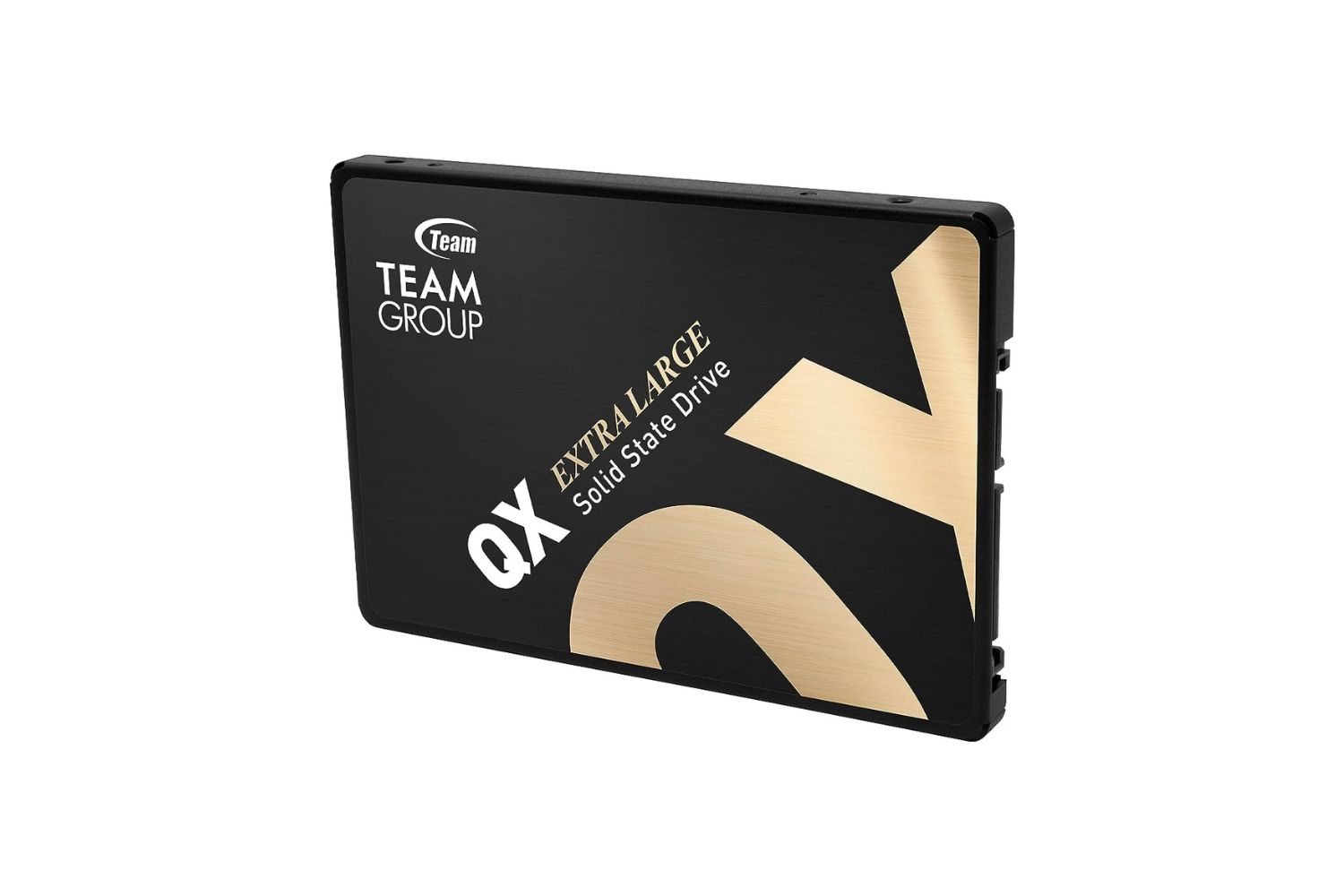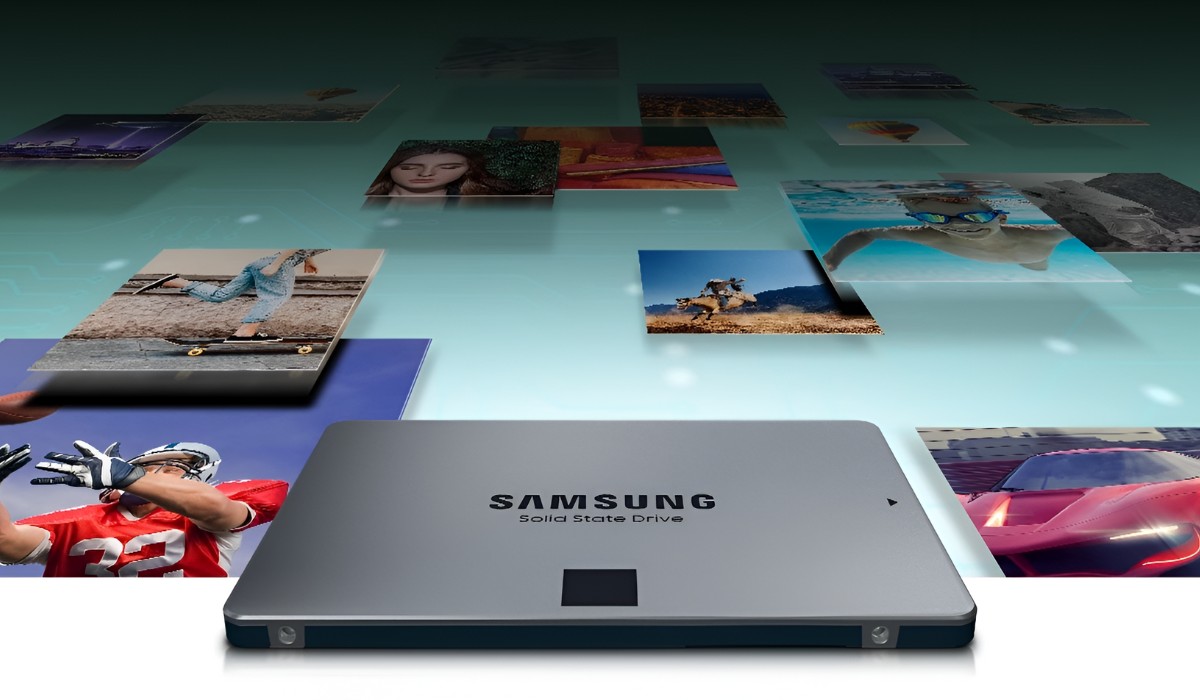Why do I need a Solid State Drive for Windows 10?
A Solid State Drive (SSD) has become an essential component for any Windows 10 user. Unlike traditional hard disk drives (HDDs), SSDs utilize flash memory technology, making them faster, more reliable, and more energy-efficient. With Windows 10 being a resource-intensive operating system, having an SSD can significantly enhance the overall performance and user experience.
One of the main advantages of an SSD is its lightning-fast speed. Traditional HDDs rely on spinning disks and moving mechanical parts, which can result in slower data access and file transfers. Conversely, SSDs have no moving parts and can quickly retrieve data, resulting in faster boot times, application launches, and file loading. So, if you’re tired of waiting for your computer to start up or waiting for applications to respond, upgrading to an SSD is the way to go.
Another important factor to consider is the reliability of SSDs. Solid-state drives are less prone to physical damage as they lack the spinning disks found in HDDs. This increased durability makes them an ideal choice for users who are constantly on the go or who prioritize data protection. Additionally, SSDs are less susceptible to data corruption and fragmentation, ensuring that your files remain intact and your system stays running smoothly.
Energy efficiency is yet another important benefit of SSDs. These drives consume significantly less power than traditional HDDs, leading to longer battery life for laptops and a reduction in overall energy consumption. With Windows 10 already demanding a fair amount of power, having an SSD can help optimize your system’s energy usage.
Lastly, SSDs offer a quieter and cooler computing experience. Since they lack moving parts, there is no sound generated from spinning disks or vibrations. This means a quieter working environment, perfect for those who value a peaceful atmosphere. Additionally, SSDs produce less heat compared to HDDs, reducing the need for elaborate cooling systems and contributing to a more efficient and cooler-running system.
Overall, a Solid State Drive is a vital component for any Windows 10 user. Its speed, reliability, energy efficiency, and quieter operation make it a worthwhile investment. Whether you are a professional, a gamer, or a casual user, upgrading to an SSD will dramatically improve your computing experience and allow you to fully maximize the capabilities of Windows 10.
How much storage does Windows 10 require?
Before determining the size of the Solid State Drive (SSD) you need for Windows 10, it’s important to understand the storage requirements of the operating system. The amount of storage required can vary depending on several factors, including the version of Windows 10 and any additional software or files you plan to install.
Microsoft recommends a minimum of 32 GB of storage for the 32-bit version of Windows 10 and 64 GB for the 64-bit version. However, these recommendations are based on the bare minimum requirements and may not leave much room for additional software, updates, and personal files. To ensure a smooth and trouble-free experience, it’s advisable to go for a larger capacity SSD.
On average, a fresh installation of Windows 10 without any additional software or personal files will take up around 20-25 GB of storage space. However, keep in mind that Windows 10 regularly receives updates, which can consume additional storage. Major updates, such as feature updates, can require several gigabytes of free space to install.
If you plan to install programs and apps, store media files, or create documents, you will need to account for that additional space. The size of the programs and media files can vary significantly, so it’s important to estimate your storage needs based on your specific usage requirements.
It’s also worth noting that Windows 10 includes a feature called “Storage Sense” that helps manage disk space by automatically deleting unnecessary files and moving older files to cloud storage or an external drive. Utilizing this feature can help free up storage space on your SSD.
Considering these factors, a minimum of 128 GB SSD is recommended for most users, providing ample space for Windows 10, programs, and personal files. However, if you plan to store a large number of media files or frequently work with resource-intensive software, opting for a larger capacity SSD such as 256 GB or 512 GB would be a wise choice.
Ultimately, your storage needs will depend on how you use your computer and what files and applications you intend to have. It’s always better to have more storage than you think you need to ensure your system runs smoothly and you have enough space for future needs.
What size Solid State Drive is recommended for Windows 10?
When deciding on the size of the Solid State Drive (SSD) for Windows 10, it’s crucial to consider your usage requirements, budget, and future needs. While the minimum requirement for Windows 10 is 32 GB for the 32-bit version and 64 GB for the 64-bit version, it’s advisable to opt for a larger capacity SSD to accommodate the operating system, programs, and personal files without running out of space.
A 128 GB SSD is a popular choice for many users as it offers a good balance between cost and storage capacity. This size allows you to comfortably install Windows 10, essential programs, and personal files while leaving room for future updates and expansion.
For users who require more storage for their applications, media files, or work-related projects, a 256 GB SSD would be a better option. This additional space provides flexibility for installing resource-intensive software or games and storing a larger library of photos, videos, and music without worrying about running out of space.
If you are a power user or professional with demanding storage needs, a 512 GB or higher SSD may be the most suitable choice. This size can support multiple large software applications, extensive media libraries, and even virtual machines for testing or development purposes.
It’s worth noting that the prices of SSDs have become more affordable in recent years, allowing users to opt for larger capacities without breaking the bank. Therefore, if your budget permits, it’s recommended to go for a larger SSD to future-proof your system and provide ample room for growth.
Other factors to consider when choosing the size of your SSD include whether you use cloud storage services to offload files and whether you regularly clean up or manage your disk space. Utilizing cloud storage or regularly cleaning up unnecessary files can help optimize your storage usage and potentially reduce the required SSD size.
Ultimately, the size of the SSD you choose for Windows 10 will depend on your specific needs and budget. Consider your storage requirements, future plans, and the overall longevity and performance of your system to make the best decision.
Can I get by with a smaller Solid State Drive for Windows 10?
While it’s technically possible to use a smaller Solid State Drive (SSD) for Windows 10, it may not provide the optimal experience in the long run. While the minimum storage requirement for Windows 10 is 32 GB for the 32-bit version and 64 GB for the 64-bit version, these sizes leave little room for additional software, updates, and personal files.
If you choose to go with a smaller SSD, it’s crucial to carefully manage your storage space to prevent running out of room. This means regularly cleaning up unnecessary files and using cloud storage or external drives to offload larger files or infrequently used data.
However, it’s important to consider that Windows 10 regularly receives updates, including major feature updates that require a significant amount of storage space to install. Over time, these updates can accumulate, eating up valuable storage on a smaller SSD. This can restrict your ability to install new applications or store essential files.
Another consideration is the potential impact on system performance. When an SSD reaches near-full capacity, it may start to experience reduced performance and slower read/write speeds. This can lead to longer boot times, delays in launching applications, and overall system sluggishness.
If you primarily use your computer for basic tasks such as web browsing, word processing, and media consumption, a smaller SSD may be sufficient. However, if you engage in resource-intensive activities such as gaming, video editing, or running intensive software applications, a larger SSD is recommended to ensure smooth performance and ample storage space.
Ultimately, the decision to use a smaller SSD for Windows 10 comes down to personal preference and usage requirements. While it is possible, it’s important to consider the potential limitations and trade-offs that come with limited storage capacity. It’s generally recommended to opt for a larger SSD to provide a more comfortable and future-proof computing experience.
Benefits of having a larger Solid State Drive for Windows 10
Opting for a larger Solid State Drive (SSD) for your Windows 10 system brings several significant advantages that can greatly enhance your overall computing experience. Here are some of the benefits you can enjoy by having a larger capacity SSD:
1. Ample Storage Space: With a larger SSD, you have more room to install additional software applications, store media files like photos, videos, and music, and keep important documents. This extra storage capacity allows you to have a comprehensive library of files without worrying about running out of space.
2. Seamless Multitasking: A larger SSD enables smoother multitasking by allowing you to open and switch between multiple applications and files without experiencing performance degradation. This is especially beneficial for professionals who work with resource-intensive software or individuals who enjoy gaming.
3. Future-Proofing: Investing in a larger capacity SSD ensures that your system can handle future updates, installations, and the growing demands of software and applications. As technology progresses and software sizes increase, having ample storage space will prevent you from needing to upgrade to a larger SSD in the near future.
4. Faster File Transfer: SSDs are known for their lightning-fast read and write speeds. With a larger capacity SSD, you can enjoy swift file transfers, improving productivity and reducing waiting times when moving large files or performing data backups.
5. Enhanced Performance: Larger SSDs generally offer better overall performance. As you fill up your SSD, it may experience reduced performance and slower read/write speeds. By having more space available on a larger SSD, you can maintain optimal performance and enjoy faster boot times, snappier application launches, and efficient system responsiveness.
6. Flexibility for Virtual Machines: If you regularly work with virtual machines for testing or development purposes, a larger SSD allows you to allocate sufficient storage space to run multiple virtual machines simultaneously. This provides flexibility and eliminates any concerns about storage limitations when working with virtual environments.
7. Room for Asset-Intensive Work: If your work involves editing high-resolution pictures or videos, having a larger SSD ensures you have enough space to store these asset-intensive files. This allows for smoother editing processes and avoids the need to constantly transfer files between external storage devices.
8. Convenience in Backup Strategies: With a larger capacity SSD, you have more choices for backup strategies. You can create multiple system images or maintain multiple versions of backups without worrying about running out of space. This added convenience helps protect your valuable data and ensures you can recover your system if needed.
In summary, opting for a larger Solid State Drive for your Windows 10 system provides ample storage space, seamless multitasking, future-proofing, faster file transfers, enhanced overall performance, flexibility for virtual machines, support for asset-intensive work, and convenience in backup strategies. These benefits make it a worthwhile investment for individuals who value performance, productivity, and the versatility to handle their expanding storage needs.
Considerations when choosing the size of a Solid State Drive for Windows 10
When deciding on the size of a Solid State Drive (SSD) for Windows 10, there are several key considerations to keep in mind. These factors will help you choose an SSD that meets your storage needs and provides an optimal computing experience. Here are some important considerations:
1. Usage Requirements: Evaluate your usage requirements and determine how you intend to use your Windows 10 system. Consider factors such as the number and size of applications you plan to install, the amount of media files you want to store, and the nature of your work or hobbies. This will help you estimate the storage capacity you need.
2. Future Growth: Think about your future storage needs. If you foresee your files and applications growing over time or plan to use resource-intensive software, it’s wise to opt for a larger SSD to accommodate future growth. This will save you the hassle and cost of upgrading to a larger SSD later on.
3. Budget: Determine your budget for the SSD purchase. Generally, larger capacity SSDs tend to be more expensive than smaller ones. Strike a balance between your storage needs and budget to find the best SSD that fits your requirements without exceeding your financial limits.
4. Cloud Storage and External Drives: Consider whether you utilize cloud storage services or external drives for storing files and applications. If you offload files to cloud storage or use external drives for storage, you may be able to get by with a smaller SSD. However, keep in mind that having sufficient internal storage can provide faster access to files and applications.
5. Operating System Updates: Take into account the regular updates that Windows 10 receives. Major updates, especially feature updates, can consume a significant amount of storage space. By having a larger SSD, you can comfortably install updates without worrying about running out of storage or compromising performance.
6. Performance Considerations: Keep in mind that SSDs tend to have better performance when not fully utilized. Leaving some space on your SSD can help maintain optimal performance and extend the lifespan of the drive. Consider getting an SSD with additional storage capacity to improve performance and longevity.
7. Frequent Data Cleanup: If you are proactive in managing your data and regularly remove unnecessary files or uninstall unused applications, you may be able to get by with a smaller SSD. This requires discipline and organization to ensure that your storage usage remains in check.
Considering these factors will help you choose the right size SSD for your Windows 10 system. By evaluating your usage requirements, considering future growth, and staying within your budget, you can make an informed decision that provides the optimal storage capacity for your needs.
How to check the current storage usage on Windows 10
Checking the current storage usage on your Windows 10 system is a straightforward process. By following these simple steps, you can easily determine how much storage space is being utilized and make informed decisions about your storage needs:
1. Open File Explorer: Start by opening File Explorer, either by clicking on the folder icon on the taskbar or by using the keyboard shortcut “Windows key + E”.
2. Navigate to “This PC”: In the left-hand pane of File Explorer, click on “This PC” to view a list of available drives on your system.
3. Check the storage usage: Under “This PC,” you will see a list of drives, including your main system drive, typically labeled “Local Disk (C:)”. Right-click on the drive and select “Properties” from the context menu.
4. View storage statistics: In the properties window that appears, you will see a tab labeled “General.” Click on this tab to view the storage statistics for the selected drive, including the used and available storage space.
5. Usage visualization: Windows 10 also provides a visual representation of storage usage. Click on the “Free up space” button under the storage statistics to launch the storage usage visualization tool. This tool provides a breakdown of various categories of data and allows you to delete unnecessary files to free up space.
6. Check specific folder sizes: If you want to determine the storage usage of specific folders, you can use the built-in File Explorer functionality. Navigate to the folder you want to inspect, right-click on it, and select “Properties” from the context menu. In the properties window, you will see the size of the selected folder and the number of files it contains.
By following these steps, you can quickly and easily check the current storage usage on your Windows 10 system. This information allows you to assess your storage needs, identify any areas of concern, and take appropriate actions to manage your storage effectively.
Tips for managing storage on Windows 10 with a Solid State Drive
Managing storage effectively is crucial when using a Solid State Drive (SSD) on your Windows 10 system. By following these tips, you can maximize your available storage space, maintain optimal performance, and ensure a smooth computing experience:
1. Regularly clean up unnecessary files: Utilize tools like the built-in Disk Cleanup utility or third-party software to remove temporary files, system caches, and other unnecessary data that may take up valuable SSD space. Performing regular cleanups helps free up storage and keeps your system running smoothly.
2. Use the Storage Sense feature: Enable the Storage Sense feature on Windows 10 to automatically clean up files that are no longer needed, such as temporary files and items in the Recycle Bin. This feature can be accessed in the “Storage” section of the Windows 10 settings and helps you effortlessly manage storage utilization.
3. Optimize storage usage: Take advantage of tools like the Compact OS feature in Windows 10 to compress system files and reduce their size on the SSD. This optimization technique can help save valuable storage space without compromising the performance of your system.
4. Move data to external storage: Offload infrequently accessed files to external hard drives or cloud storage services. This can include large media files, archives, or documents that are not regularly used. By keeping these files off your SSD, you can free up space for more frequently accessed data and applications.
5. Utilize cloud storage options: Take advantage of cloud storage services like OneDrive, Google Drive, or Dropbox to store files and documents. These services allow you to access your files across multiple devices without consuming SSD space. They can also serve as a backup solution, providing an additional layer of data security.
6. Install only essential applications: Be selective when installing applications and only install those that you regularly use. Uninstall any programs that are no longer needed to free up space. Keeping your application collection lean and organized helps optimize storage and system performance.
7. Store media files on secondary storage: If you have a secondary storage device, such as a traditional hard drive or an external SSD, consider storing your large media files, such as videos or photo libraries, on that device. This helps keep your primary SSD focused on storing the operating system and frequently accessed files.
8. Use symbolic links: Symbolic links allow you to redirect data from one location to another without changing the way programs or applications access it. By creating symbolic links, you can store files on secondary storage devices while still accessing them seamlessly from their original locations on the SSD.
By following these tips, you can effectively manage storage on your Windows 10 system with a Solid State Drive. Practicing good storage management habits ensures optimal performance, maximizes available space, and extends the lifespan of your SSD.
Conclusion
Choosing the right size Solid State Drive (SSD) for your Windows 10 system is essential for optimal performance, storage capacity, and overall user experience. While the minimum storage requirement for Windows 10 is 32 GB or 64 GB depending on the version, it’s advisable to go for a larger capacity SSD to accommodate the operating system, applications, and personal files without running into storage limitations.
By considering factors such as usage requirements, future growth, budget, and the need for additional storage for media files and applications, you can make an informed decision. A larger SSD offers numerous benefits, including ample storage space, seamless multitasking, future-proofing, faster file transfers, enhanced performance, and flexibility for virtual machines or asset-intensive work.
However, depending on your usage patterns, a smaller SSD might suffice for basic tasks, especially if you make use of cloud storage or external drives to offload files. Regularly managing storage by cleaning up unnecessary files, utilizing tools like Storage Sense, and moving infrequently accessed data to external storage can also help optimize your SSD’s performance and capacity.
Ultimately, it’s important to find the right balance between storage needs and budget. Investing in a suitable SSD size that allows room for growth and manages future requirements will ensure you have sufficient storage space for your files and applications, as well as maintain system performance.
By following the tips provided for managing storage on Windows 10 with an SSD, you can further optimize storage utilization, keep your system organized, and extend the lifespan of your SSD. Regularly cleaning up unnecessary files, utilizing cloud storage, being selective with application installations, and utilizing external storage can all contribute to efficient storage management.
In conclusion, the size of the SSD you choose for Windows 10 should be based on your specific needs, usage requirements, and future growth considerations. With careful planning and effective storage management, you can enjoy the benefits of a solid-state drive, such as improved performance, faster file transfers, and ample storage space, ensuring a seamless and enjoyable experience on your Windows 10 system.







